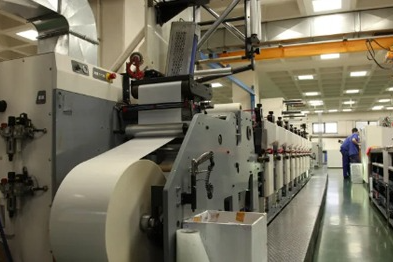The invention of the printing press was one of humanity's transformative technological advances, giving rise to mass communication and the Age of Enlightenment. The journey from Gutenberg’s printing press to modern digital printing technology is a testament to human ingenuity and its profound impact on literacy and the spread of information.
Gutenberg’s Printing Press: Dawn of a New Age The story of the printing press begins with Johannes Gutenberg’s revolutionary invention in the 15th century. Gutenberg's printing press, with its movable type printing technology, made it possible to produce books quickly and in large quantities. This innovation democratized knowledge, making it accessible to a wider audience beyond the clergy and nobility. The Gutenberg Bible, printed around 1455, symbolized this major shift and marked the beginning of the era of printed books.
Industrial Revolution: Steam power and other industrial revolutions brought significant changes to the printing industry. The introduction of steam-powered presses in the 19th century, such as the Koenig & Bauer press, increased production speed and efficiency. Newspapers and books became more affordable, created a literate public, and facilitated the spread of new ideas and social movements.
20th Century: Offset Printing and Phototypesetting The 20th century saw the emergence of offset printing, a technique in which ink is transferred from a printing plate to a blanket and then to the printing surface. This method improves print quality and allows for high-volume production. At the same time, phototypesetting replaced metal type, simplifying the process of arranging printed text and further speeding up production.
Digital Age: Laser Printers and Inkjet Technology The digital revolution has once again transformed the printing press. The development of laser printers and inkjet technology in the late 20th century made it possible to produce high-quality prints directly from digital files, without the use of traditional printing plates. This innovation led to the rise of print-on-demand, personalized publications, and self-publishing.
Impact on Literacy and Information Dissemination Each major innovation in print technology expanded the range of written content and increased literacy and information exchange. The printing press played an important role in disseminating education, preserving cultural heritage, and promoting critical thinking. It gives individuals the tools to learn, share and challenge ideas to shape society and drive progress.
All in all, the historical development of the printing press is a narrative of continuous progress and social change. From Gutenberg's printing press to today's digital printers, every advancement has left an indelible mark on the way we communicate and obtain information, highlighting the lasting legacy of this remarkable invention.

 EN
EN
 AR
AR
 CS
CS
 DA
DA
 NL
NL
 FI
FI
 FR
FR
 DE
DE
 EL
EL
 HI
HI
 IT
IT
 JA
JA
 KO
KO
 PL
PL
 PT
PT
 RO
RO
 RU
RU
 ES
ES
 SV
SV
 IW
IW
 ID
ID
 VI
VI
 SQ
SQ
 HU
HU
 MT
MT
 TH
TH
 TR
TR
 AF
AF
 GA
GA
 BN
BN
 BS
BS
 LO
LO
 LA
LA
 MI
MI
 MN
MN
 NE
NE
 MY
MY
 KK
KK
 UZ
UZ
 KY
KY
